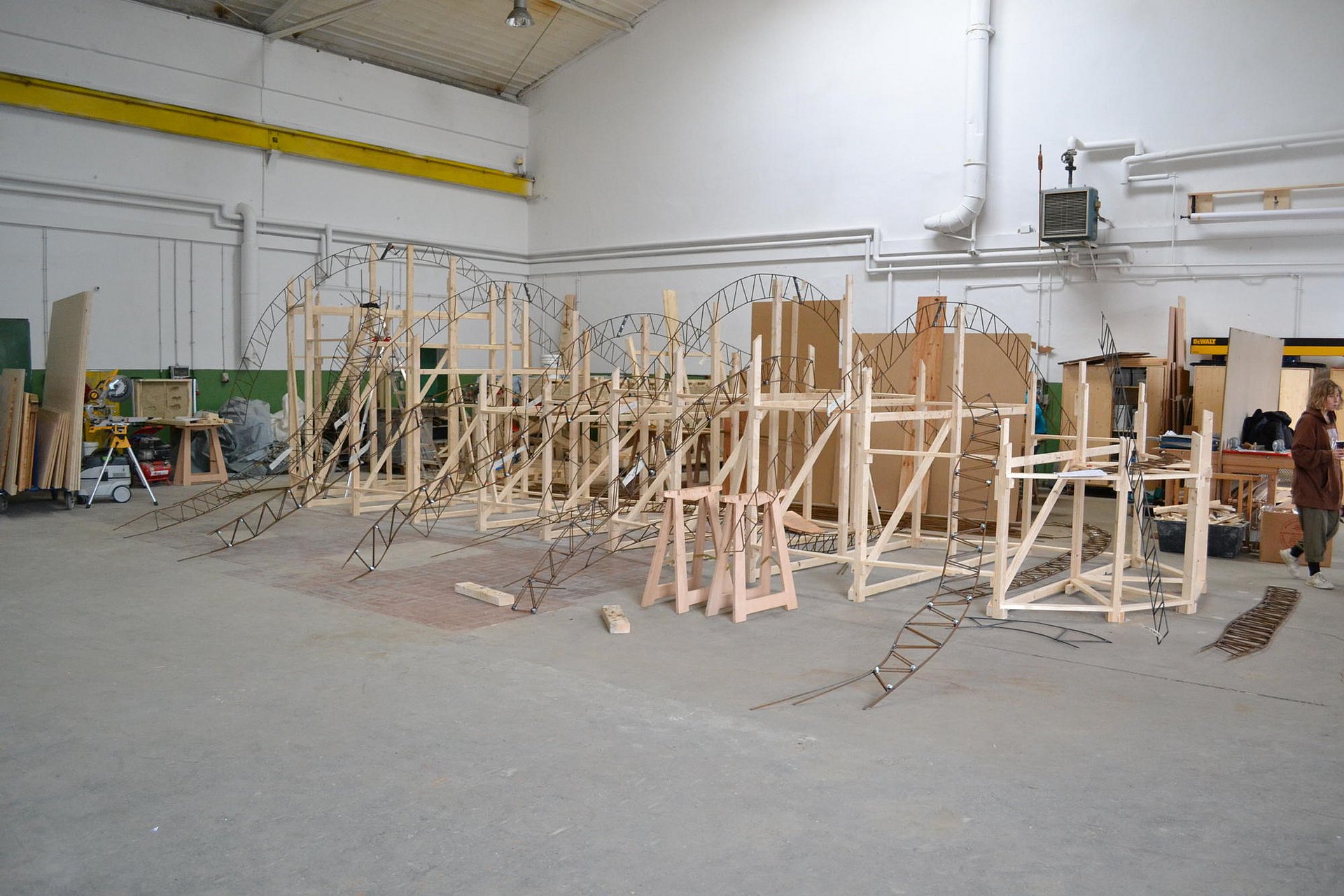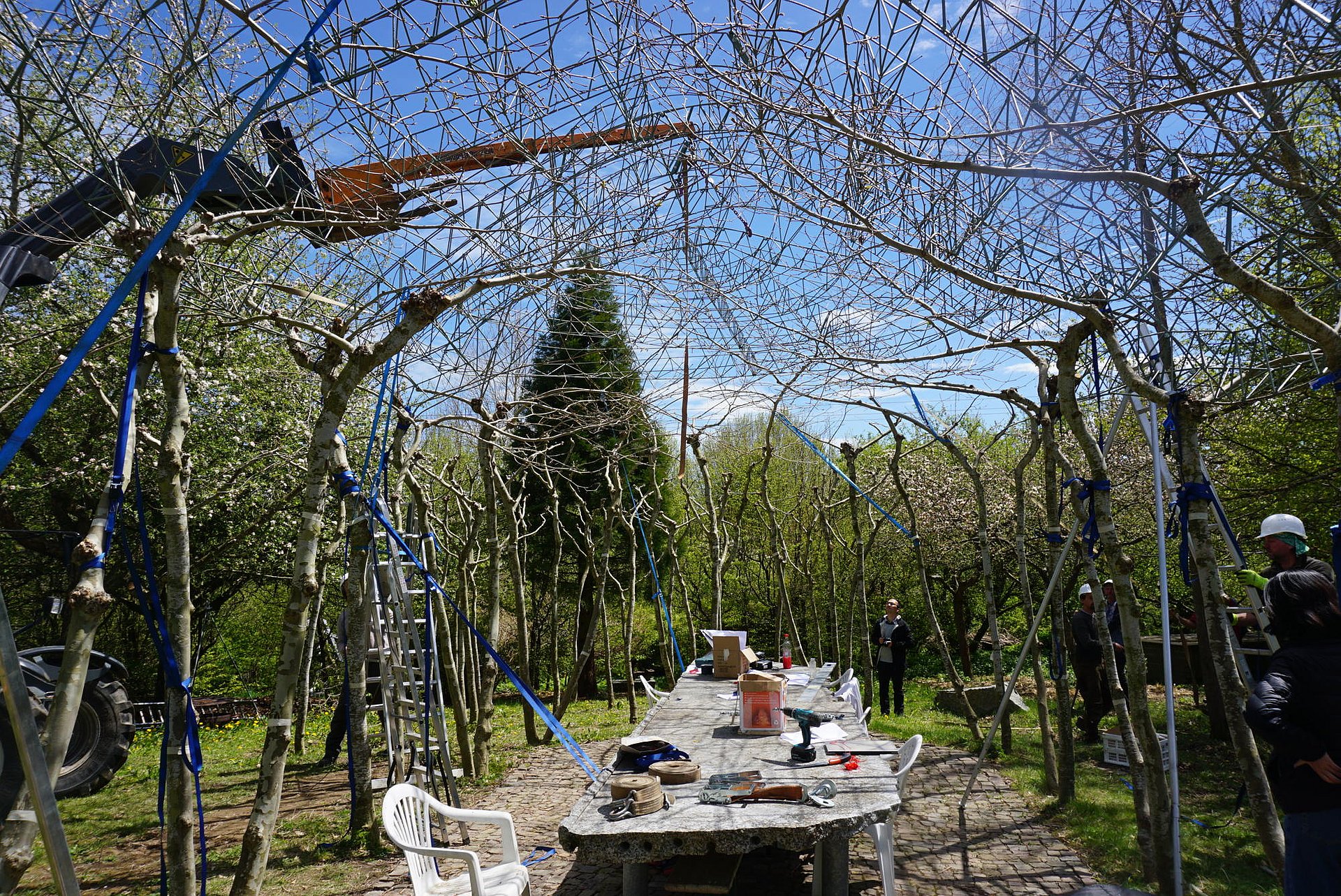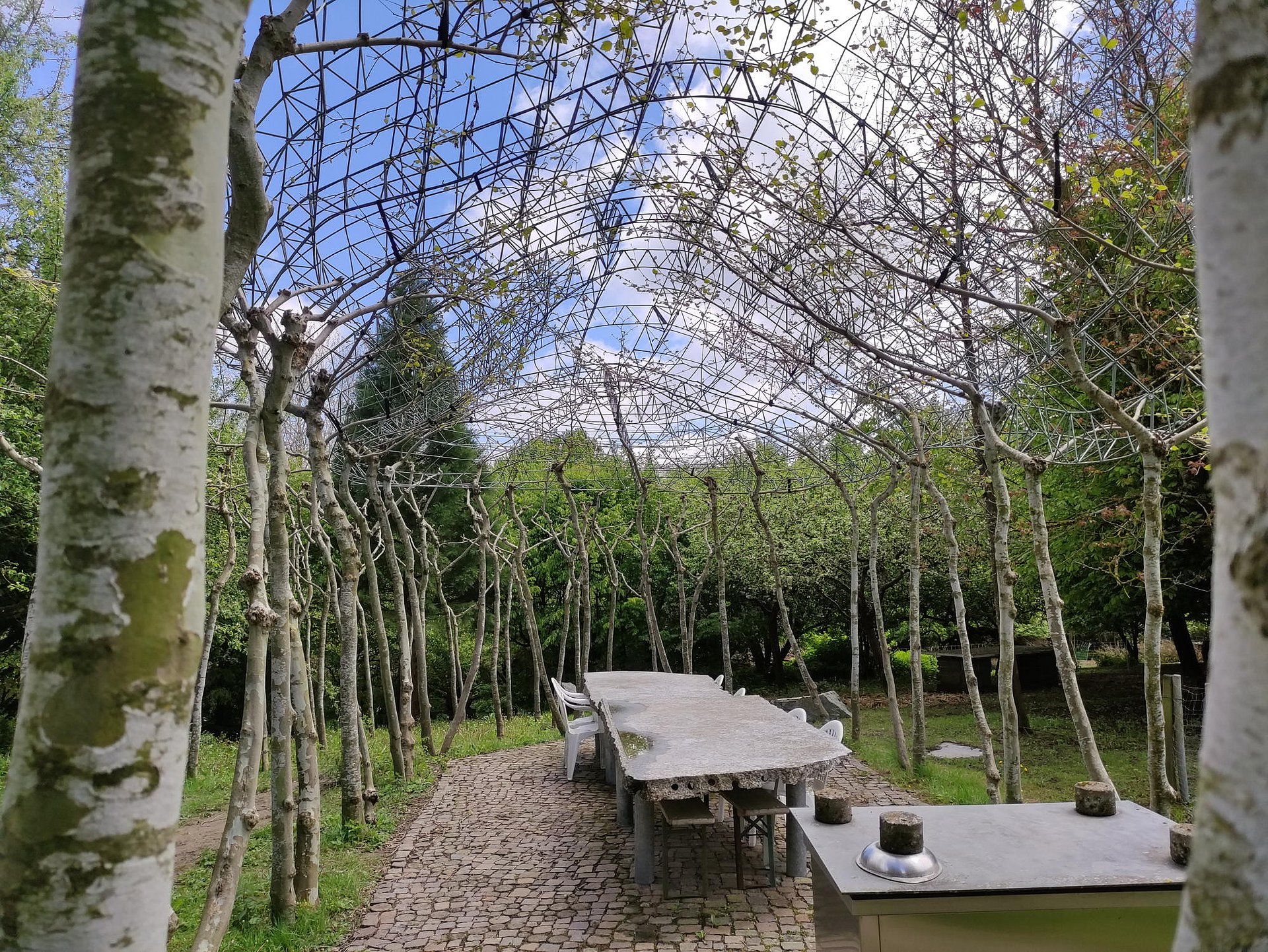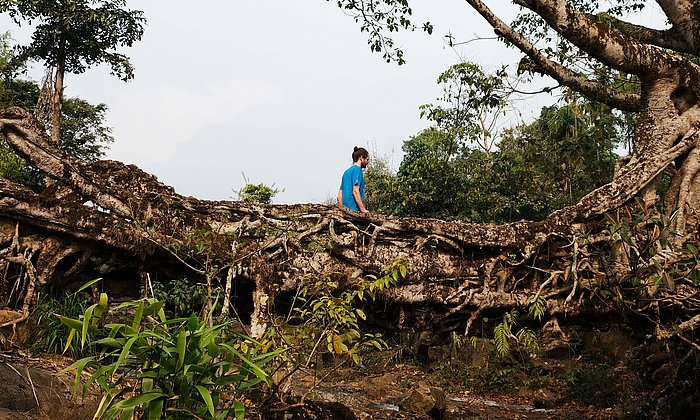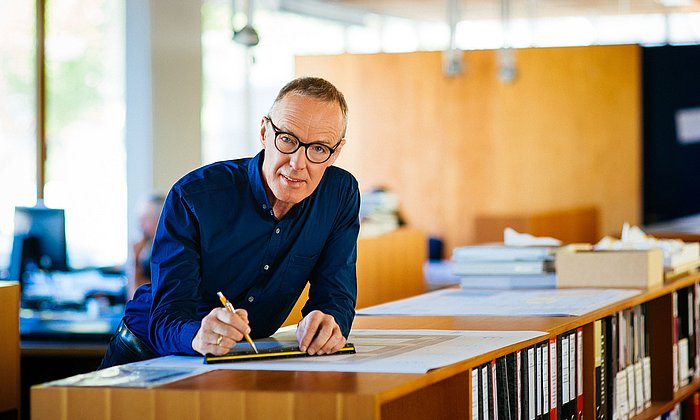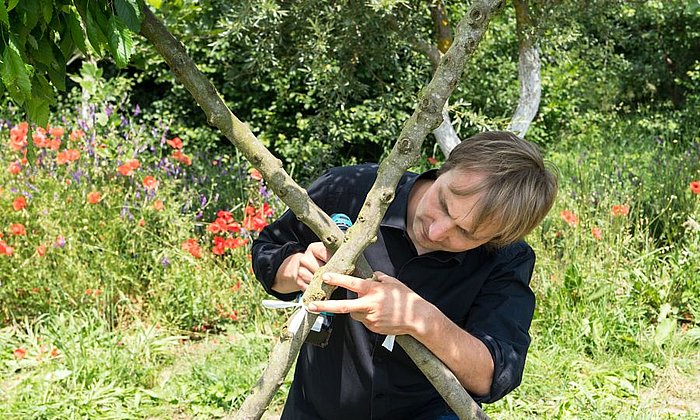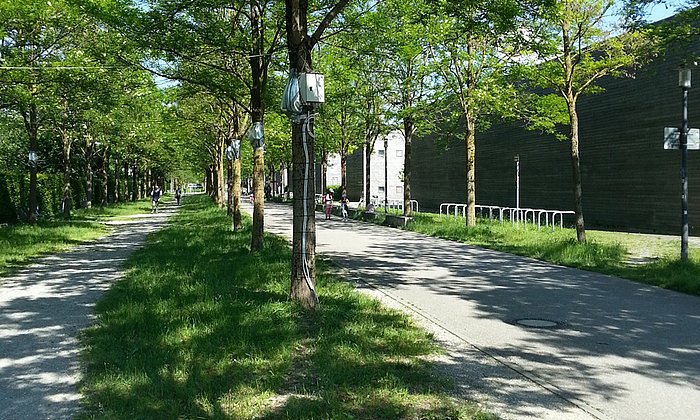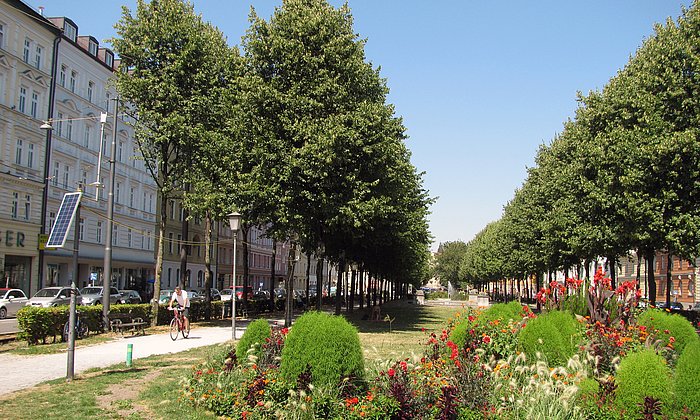Interview with Prof. Ferdinand Ludwig on functional greenery in the urban environment
“We play ping pong with the tree”
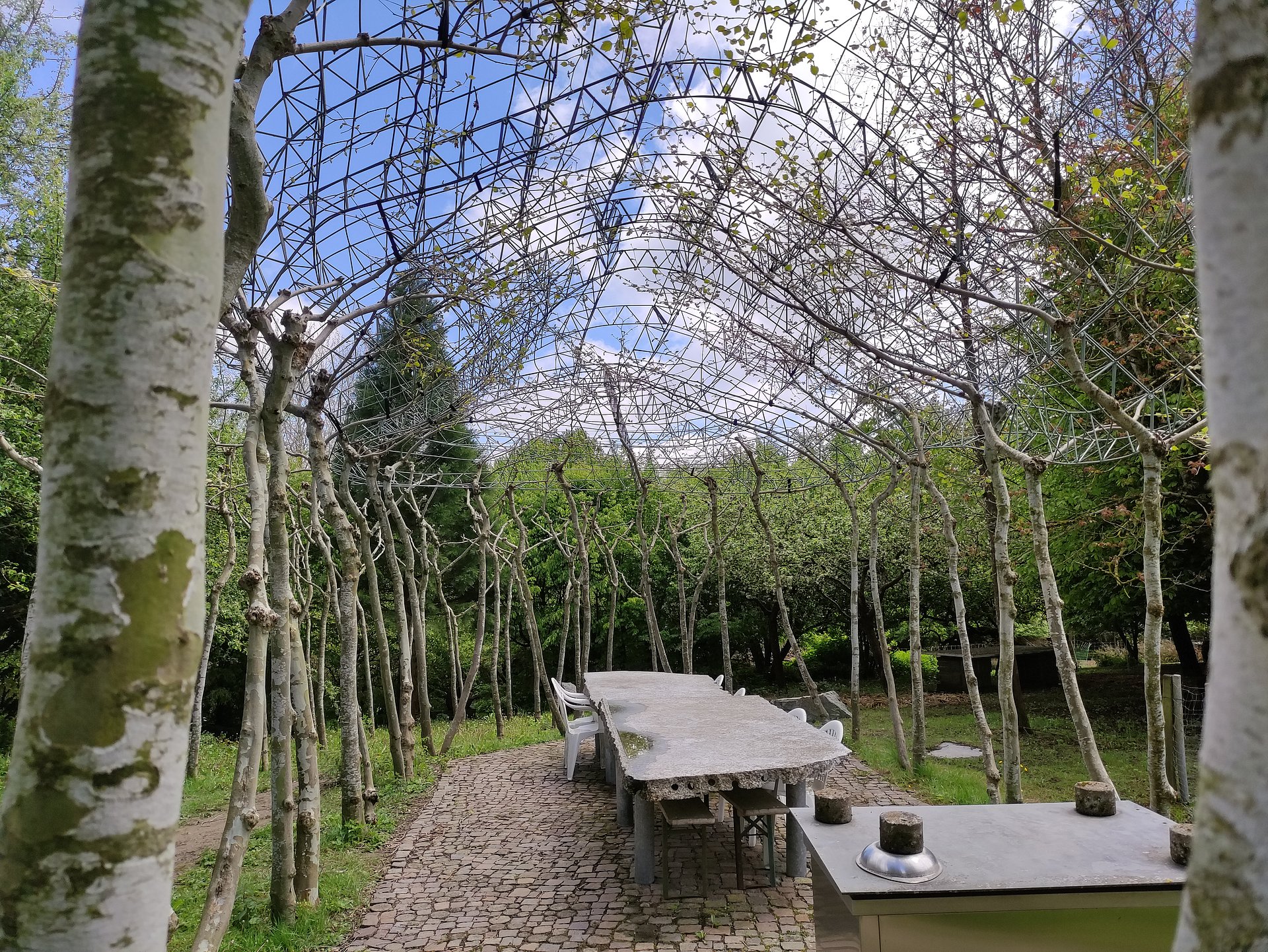
You are using living materials in your work as an architect. What’s it like to have trees as co-architects?
We design and build structures with living trees. Because the material keeps growing, the construction is never finished. Nor is the design. We practically play ping pong with the tree. We serve the ball, the tree returns our serve, and then we have to see whether the outcome matches our plan. If not, we have two options. Either we manipulate the growth, for example by cutting, or we change our plan.
How is it even possible to design living architecture?
We create 3D scans of the existing trees at regular intervals. These help us to understand the structures as they grow. But that’s not enough for a construction drawing. What matters to us are the nodes and connecting lines of the grown structures, which we can identify through computer-based abstraction. The results enable us to carry out structural calculations and simulations of the transport processes within the tree. With these data, we can draw conclusions as to how the branches will grow in thickness over time.
Are there examples of architectural concepts created in this way?
We demonstrated the process with a pavilion intended for use as a summer kitchen. We started by mapping the geometric layout of the trees onsite. The plan was to use them to support a roof structure to protect the summer kitchen against the wind and weather. It was obvious: The project would need technical components. But we wanted to keep them to a minimum. After a precise survey of the trees with their branch structures, we were able to derive the roof geometry directly from the digitized and abstracted 3D data: Every curve of the roof follows the shape of the branches supporting it. In this way, we achieved a roof geometry optimally adapted to the growth of the trees. We designed the entire roof on the computer and prefabricated it. The trees were cut back prior to installation and the pavilion was built within two days. It was exciting to watch the crane slowly lowering the three roof elements and seeing the roof itself fitting into the trees.
After the installation the trees are still alive. How can you maintain the function of the structure?
That is also part of our concept. Our digital tools are essential for this because we use them to manage the future development of the objects. Our knowledge of the growth processes also plays an important role. For example: Growing branches and twigs increase in both length and thickness. Only the young, one year old shoots grow in length. The other limbs and branches grow only in thickness so that the basic geometry doesn’t change over time. But of course constant care is needed. With a lot of trimming and pruning, the trees will remain thinner. If I allow them to grow too wild, the overall picture will be less uniform and the trees will get thicker. More trees will die off, however. So we could have a number of different future scenarios.
What is your plan for your most recent project, the Baubotanik summer kitchen with the roof structure that you have created?
In this project we want the new twigs to be woven into the structure so the branches will grow out of the top of the roof. So we will continue to plan and work with the additional tree growth. For that reason, we cannot yet fully enclose the roof. The living support structure is still too weak. When it reaches the point where we can complete the roof covering – which will happen within a few years – the priority will be to preserve the function of the roof. That is fundamentally different from the conventional approach in construction and architecture. In our case, too, we set an ultimate goal – in this case a pavilion roof. But for us, there is no point where you say that the design is finished and you can pack up and go home. Instead, the ongoing development of the design is part of the plan right from the start.
Technical University of Munich
Corporate Communications Center
- Dr. Katharina Baumeister
- katharina.baumeister@tum.de
- presse@tum.de
- Teamwebsite
Contacts to this article:
Prof. Dr.-Ing. Ferdinand Ludwig
Professorship of Green Technologies in Landscape Architecture
T: +49 89 289-22570
ferdinand.ludwig@tum.de
